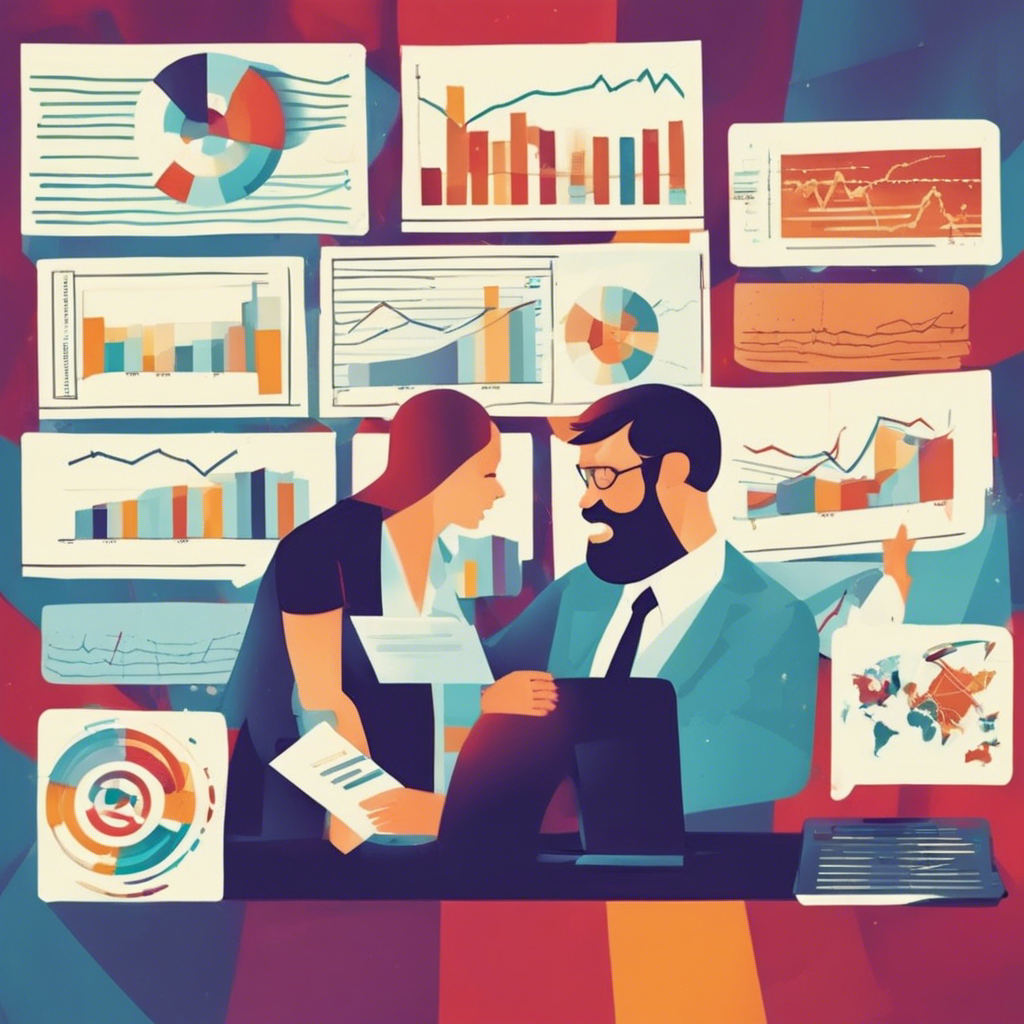The Disconnect Between Economic Data and American Sentiment

Despite positive economic indicators, Americans remain pessimistic about the state of the economy and President Joe Biden’s management.
The phrase “the vibes are off” may not typically be associated with economic analysis, but it has become a recurring theme in discussions about America’s economy over the past year. Despite positive data such as slowing inflation, lower petrol prices, abundant job opportunities, rising incomes, and a strong stock market, surveys consistently reveal that Americans are unhappy and believe that the economy is in poor shape under President Joe Biden’s leadership. This article aims to explore the reasons behind this disconnect between economic data and public sentiment.
1: The Evidence of Gloom
Consumer sentiment is a key indicator economists use to gauge public sentiment. The University of Michigan’s consumer-sentiment index has remained at levels comparable to those during the global financial crisis of 2007-09, despite a slight improvement in December. Additionally, surveys like The Economist/YouGov poll have shown that nearly half of Americans believe the economy is worsening, a significant increase from previous years. Gallup polls indicate that two-thirds of respondents disapprove of President Biden’s handling of the economy. This pessimism persists even though the U.S. has outperformed other developed countries in recent years.
2: Explaining the Pessimism
Various theories attempt to explain the prevailing pessimism. One argument suggests that Americans have valid reasons to feel glum, as certain economic indicators do not align with their everyday experiences. For instance, inflation has eroded wages, and although average earnings for private-sector workers have remained stagnant since February 2020, recent comparisons show a decline in after-tax personal income. The rising interest rates required to combat inflation have also made housing and car loans more expensive, leading to concerns about housing affordability.
3: The Biden Administration’s Perspective
The Biden administration contends that there are positive aspects to the current economy. They argue that the perceived stagnation in private-sector wages is a statistical illusion caused by biases in the consumer-price index. Using the personal-consumption expenditures index targeted by the Federal Reserve, real wages are shown to be on a pre-pandemic upward trend. The unemployment rate stands at 3.7%, just above a five-decade low, and wage growth has been particularly strong for low-income Americans. The stock market, as represented by the S&P 500 index, has also been performing well.
4: Unduly Pessimistic Americans
Considering a range of indicators, Americans appear to be unduly pessimistic. Economists Ryan Cummings and Neale Mahoney, who previously served in the Biden White House, developed a model that predicts the consumer-sentiment index based on inflation, unemployment, consumption data, and stock market performance. Their findings suggest that the index is approximately 20% lower than expected. Partisan hostility and negative news coverage may contribute to this pessimism. Republican antipathy towards a Democrat-controlled White House accounts for a significant portion of the sentiment gap. Additionally, economic news sentiment has been consistently worse than expected since 2021, potentially influenced by biased media coverage and social media discourse.
5: The Lagging Effect of the Pandemic Recovery
Another possible explanation for the disconnect between economic data and sentiment is the time lag between the post-pandemic recovery and public perceptions. The uncertainties and hardships experienced during the pandemic years have taken a toll on people’s outlook. Lingering concerns about inflation, even as it moderates, contribute to the negative sentiment. However, as Americans gradually adjust to higher prices and experience real-income growth, their sentiment may improve. The consumer-sentiment index has shown signs of recovery, hitting a low point in mid-2022, coinciding with peak inflation, and posting a solid rise in December.
Conclusion:
Despite positive economic indicators, Americans remain pessimistic about the state of the economy and President Biden’s management. The reasons for this disconnect are multifaceted, ranging from valid concerns about personal finances to partisan bias and negative news coverage. However, there are signs that sentiment may be improving as real-wage gains and a recovering labor market contribute to a more positive outlook. As the economy continues to evolve, understanding the complex relationship between economic data and public sentiment will be crucial for policymakers and economists alike.

